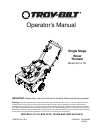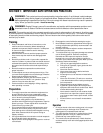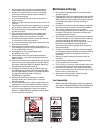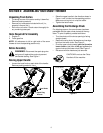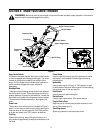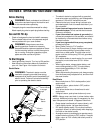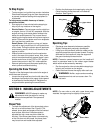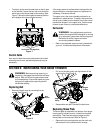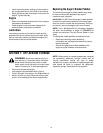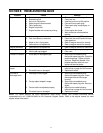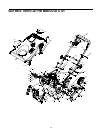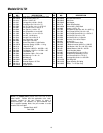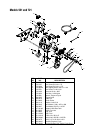
10
• Install new shave plate, making sure the heads of
the carriage bolts are on the inside of the housing.
• Adjust the shave plate according to instructions on
page 8. Tighten securely.
Engine
• Refer to the separate engine manual for all engine
maintenance procedures.
• Check engine and snow thrower frequently for
loose hardware, and tighten as needed.
Lubrication
Lubricate pivot points on the control handle and the
extension spring at the end of the control cable with a
light oil once every season and before storage of the
snow thrower at the end of the season.
Replacing the Auger’s Rubber Paddles
The snow thrower auger’s rubber paddles are subject
to wear and should be replaced if any signs of
excessive wear is present.
IMPORTANT:
Do NOT allow the auger’s rubber paddles
to wear to the point where portions of the metal auger
itself can come in contact with the pavement. Doing so
can result in serious damage to your snow thrower.
NOTE: Call 1-866-840-6483 for information regarding
the price and availability of Auger Kit 753-04472 or
contact an authorized Troy-bilt Service Dealer in your
area).
To change the rubber paddles, proceed as follows:
• Remove the existing rubber paddles by
unthreading the self-tapping screws which secure
them to the auger.
• Secure the replacement rubber paddles to the
auger using the hardware removed earlier.
SECTION 7: OFF-SEASON STORAGE
• Clean snow thrower thoroughly.
• Lubricate as instructed above with a light oil.
• Follow “Storage” instructions in the Engine Manual.
• Store in a clean, dry area. Block the snow thrower
up so it is not resting on the rubber auger blades.
NOTE: When storing in a metal storage shed, rustproof
the equipment, especially springs, cables and all
moving parts.When storing any type of power
equipment in a poorly ventilated or metal storage shed,
care should be taken to rustproof the equipment,
especially springs, cables and all moving parts.
WARNING: Never store engine with fuel in
tank indoors or in enclosed, poorly ventilated
areas where fuel fumes may reach an open
flame, spark or pilot light as on a furnace, water
heater, clothes dryer, or other gas appliance.



